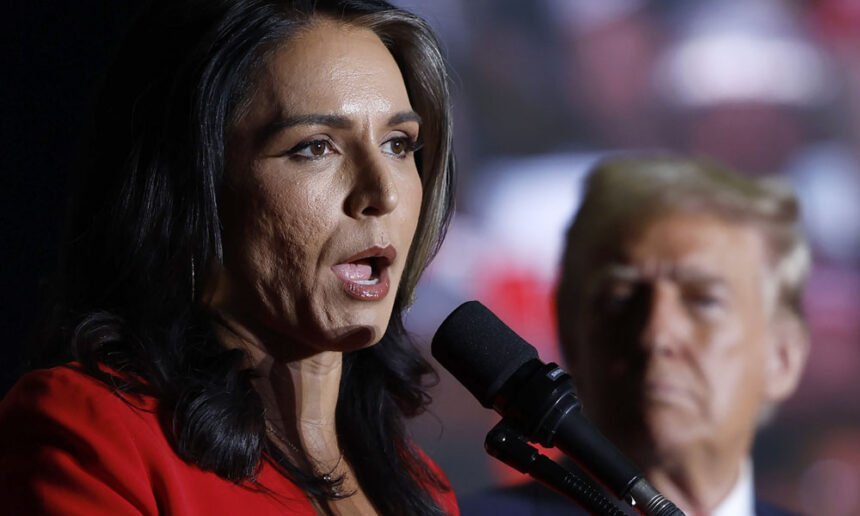Top CIA officials warned that releasing a classified report on Russia’s interference in the 2016 election could expose critical U.S. spy methods and endanger human sources. But Director of National Intelligence Tulsi Gabbard released the report anyway—after pressure from President Donald Trump and with his direct approval.
On July 23, Gabbard authorized the release of a 46-page report written by House Republicans, despite intense objections from the CIA and other intelligence agencies. According to The Washington Post, the report was only lightly redacted and contained highly sensitive information about how the U.S. collects intelligence on Russia, including details about CIA human sources inside the Kremlin.
“The desperate and irresponsible release of the partisan House Intelligence report puts at risk some of the most sensitive sources and methods our Intelligence Community uses to spy on Russia and keep Americans safe,” said Sen. Mark Warner, the top Democrat on the Senate Intelligence Committee. “And in doing so, Director Gabbard is sending a chilling message to our allies and assets around the world: the United States can no longer be trusted to protect the intelligence you share with us.”
CIA officials were especially alarmed because the document included multiple references to human spies reporting on Russian President Vladimir Putin’s plans. Those kinds of sources are among the agency’s most closely guarded secrets. The report had been locked away inside the CIA since 2020 because of the risk it posed if ever made public.
“I almost felt like I was going to get in trouble for having read that document,” said Larry Pfeiffer, a former senior CIA and White House official. “Sources and methods could be easily inferred in almost every instance. … I don’t know if I’ve seen a document of that sensitivity so lightly redacted.”
Despite these concerns, Gabbard pushed for a broader release. Multiple officials said she ignored the redactions proposed by the CIA and other intelligence bodies. One person familiar with the process said, “CIA put forward their proposed redactions and edits to the document,” but added that Gabbard “has greater declassification authority than all other intelligence elements and is not required to get their approval prior to release.”
President Trump approved the release “with minimal redactions and no edits,” according to that same source. It’s unclear if he reviewed other versions of the report before giving it the green light.
The released document is based on a controversial 2020 investigation by Republicans on the House Intelligence Committee, then led by Rep. Devin Nunes, now CEO of Trump’s social media company Truth Social. The report disputes the conclusion reached by the CIA, NSA, FBI, and a bipartisan Senate Intelligence Committee that Russia interfered in the 2016 election to help Trump defeat Hillary Clinton.
Gabbard, Trump, CIA Director John Ratcliffe, and Attorney General Pam Bondi have all claimed—without evidence—that the original Russia findings were part of a politically motivated “hoax” by the Obama administration. Bondi has since opened a criminal investigation into former Obama officials and has convened a grand jury to review potential charges.
Two former CIA officials who led the 2017 intelligence assessment told The Washington Post they stand by their findings and the intelligence backing them.
The original report was considered so sensitive it wasn’t even stored on Capitol Hill. It was kept at CIA headquarters, where it stayed for nearly four years before being handed over for release.
One intelligence official said several versions of the report were circulating—some with heavy redactions to protect national security. But Gabbard, who has spearheaded Trump’s push to rewrite the 2016 election narrative, chose the least redacted version and made the call to release it.
Democrats and former intelligence officials see the move as reckless and dangerous. They say it sends the wrong message to allies and could put intelligence sources at serious risk—just to serve a political agenda.
So far, neither the White House nor the Office of the Director of National Intelligence has responded to questions about why this version of the report was released—or what steps, if any, were taken to ensure it didn’t compromise national security.


















![Trump Named Repeatedly in Leaked Epstein Emails: ‘[Victim] Spent Hours at My House With Him’](https://dailyboulder.com/wp-content/uploads/2025/11/trump-epstein-emails-330x220.jpg)
